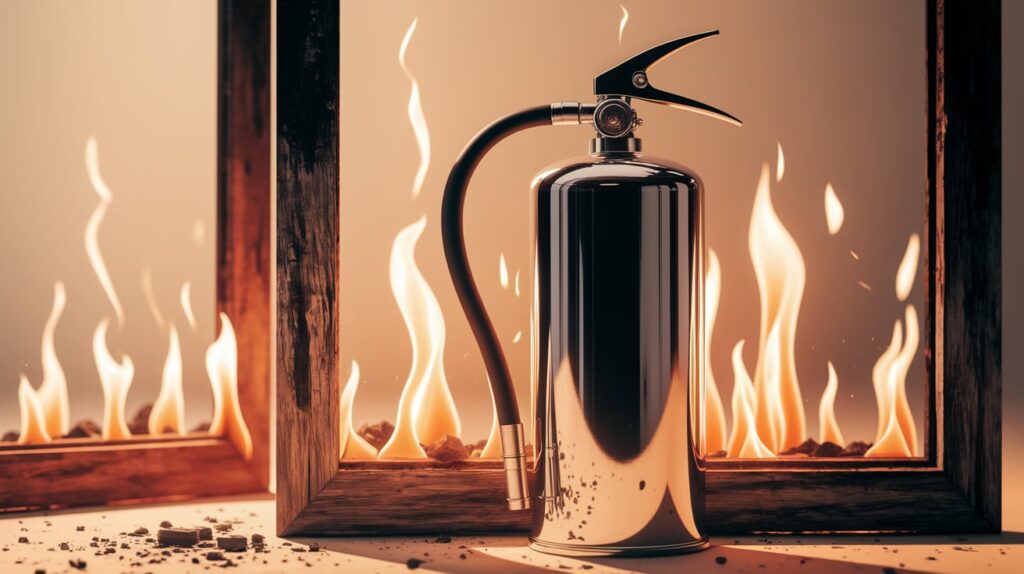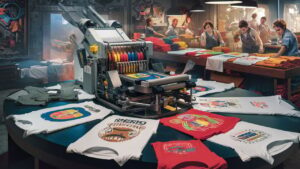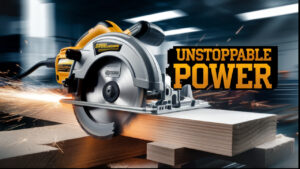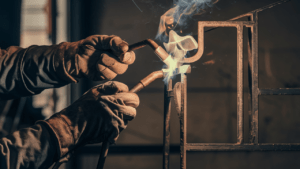When a fire breaks out, every second counts. Knowing which fire extinguisher to use could mean the difference between a minor incident and a major disaster.
Recommended Best Fire Extinguisher for Car in 2025
| Recommendation | Product |
| Best Overall | Kidde Fire Extinguisher for Vehicles |
| Popular Choice | First Alert Fire Extinguisher for Car |
| Best Value | WPW 620ml Large Upgraded 8-in-1 Fire Extinguisher |
| Best Budget | First Alert Fire Extinguisher |
| Another Excellent Pick | Portable Fire Extinguisher Spray |
You might not realize it, but not all fires are the same. Each one has its own class and requires a specific approach to be put out safely. That’s where understanding fire extinguishers and the different classes of fire comes in.
Imagine having the confidence to act quickly and effectively in an emergency, safeguarding your loved ones and property. This guide will walk you through everything you need to know about fire extinguishers and their corresponding classes of fire. So, let’s dive in and equip you with the knowledge to make informed decisions when it matters most.
Types Of Fire Extinguishers
Fire extinguishers are crucial tools for fire safety. They come in various types, each designed for specific fire classes. Understanding the types of fire extinguishers helps in choosing the right one for different fire situations.
Water-based Extinguishers
Water-based extinguishers are common and effective on Class A fires. These fires involve ordinary combustibles like wood, paper, and textiles. Water cools the flames and removes heat, effectively putting out the fire.
Foam Extinguishers
Foam extinguishers are suitable for Class A and B fires. Class B fires involve flammable liquids like petrol and oil. The foam smothers the fire, blocking the air supply and preventing re-ignition.
Dry Powder Extinguishers
Dry powder extinguishers are versatile and work on Class A, B, and C fires. They are effective against flammable gases like propane. The powder smothers flames and interrupts the chemical reaction.
Carbon Dioxide Extinguishers
Carbon dioxide extinguishers are ideal for Class B and electrical fires. CO2 displaces oxygen around the fire, suffocating it. This type leaves no residue, making it safe for electrical equipment.
Wet Chemical Extinguishers
Wet chemical extinguishers are designed for Class F fires. These involve cooking oils and fats. The wet chemical cools the fire and forms a barrier, preventing re-ignition.
Classes Of Fire
Understanding the different classes of fire is crucial for ensuring safety in homes and workplaces. Each class is unique, defined by the materials that fuel the fire. Knowing what you’re dealing with can save lives and property. Imagine having a fire extinguisher on hand, but not knowing which type of fire it’s suitable for. That’s a risk you don’t want to take. Let’s dive into the specifics of each class of fire and how you can effectively handle them.
Class A Fires
Class A fires involve ordinary combustibles like wood, paper, cloth, and plastics. These are common in homes and offices. You can tackle these fires with water, as it cools and quenches the flames effectively. Remember, a simple water-based extinguisher can be your best friend in this scenario. Have you ever doused a campfire with water? It’s the same principle.
Class B Fires
Class B fires are fueled by flammable liquids like gasoline, oil, and paint. These can be tricky because water can make them spread. Instead, use foam or dry chemical extinguishers to smother the flames. Picture yourself at a barbecue where the grill gets out of hand; a foam extinguisher could be your go-to solution. Can you recall an instance where knowing the right extinguisher could have saved the day?
Class C Fires
Class C fires involve electrical equipment like appliances, wiring, and circuit breakers. Water isn’t safe here due to the risk of electric shock. Use CO2 or dry chemical extinguishers that won’t conduct electricity. Think about the last time you had a minor electrical mishap at home. How prepared were you to handle an electrical fire?
Class D Fires
Class D fires are rare but dangerous, involving flammable metals like magnesium and titanium. These fires require special extinguishing agents like dry powder. You might not encounter these at home, but in industrial settings, they’re a real threat. Have you ever visited a factory and wondered about the fire safety measures in place?
Class K Fires
Class K fires are specific to cooking oils and fats, often found in commercial kitchens. These fires require wet chemical extinguishers designed to cool and emulsify the burning oils. If you’ve worked in a restaurant, you know the importance of having the right extinguisher at arm’s length. Are your kitchen fire safety practices up to par?
Each class of fire demands respect and caution. The right knowledge can empower you to act swiftly and safely. So next time you’re in a place with potential fire hazards, ask yourself: Do you know what you’re up against?
Choosing The Right Extinguisher
Selecting the correct extinguisher is crucial for safety. Fire extinguishers are designed for specific fire classes, like Class A for ordinary combustibles or Class B for flammable liquids. Understanding these classes ensures effective fire control.
Choosing the right fire extinguisher can be a game-changer in emergencies. Whether at home or in an industrial setting, knowing which type of extinguisher to use can make all the difference. Misjudging the situation might worsen the fire, causing more harm than good.
Matching Extinguishers To Fire Classes
Every fire has a class, and each class demands a specific type of extinguisher. For instance, a Class A fire involves ordinary combustibles like wood and paper. Here, a water or foam extinguisher is effective. If you’re dealing with a Class B fire, which involves flammable liquids like oil, you’ll need a foam or dry chemical extinguisher. For electrical fires, known as Class C, a carbon dioxide or dry chemical extinguisher is safest.
Considerations For Home Use
At home, you might face different types of fires, from kitchen flare-ups to electrical shorts. Having a multi-purpose ABC extinguisher is a wise choice. It covers most fire types you might encounter. Placement is crucial. Ensure extinguishers are easily accessible, especially in high-risk areas like the kitchen or garage. Regularly check their condition, ensuring they’re not expired or damaged.
Considerations For Industrial Use
In industrial settings, the stakes are higher. Fires can escalate quickly, leading to severe damage. Identifying the common types of materials and risks in your environment is key. Industries dealing with chemicals might face Class D fires, which involve combustible metals. Special dry powder extinguishers are necessary here. Always train employees on usage and conduct regular fire drills. Have you ever considered if the extinguishers around you are the right type? It’s not just about having one; it’s about having the right one. The decision could save lives and property.

Using Fire Extinguishers Effectively
Fire extinguishers are essential safety tools in any environment. Knowing how to use them effectively can make a big difference during a fire emergency. Using a fire extinguisher correctly requires understanding and practice. This guide will help you operate fire extinguishers safely and efficiently.
Steps To Operate
Using a fire extinguisher involves a simple process. Remember the acronym PASS:
- Pull the pin. Release the locking mechanism.
- Aim low. Point the nozzle at the fire’s base.
- Squeeze the lever. Release the extinguishing agent.
- Sweep the nozzle. Move it side to side.
Stay a safe distance from the fire. Approach only if it seems safe to do so.
Safety Precautions
Always ensure your safety first. Keep a clear exit behind you. Never let the fire block your way out. Use the correct extinguisher for the fire class. Incorrect use can be dangerous. Check the expiration date of the extinguisher. Ensure it is fully charged and ready for use.
Common Mistakes
Avoid common mistakes when using fire extinguishers. Never aim at the flames. Always aim at the base of the fire. Don’t get too close. Maintain a safe distance to prevent injury. Avoid using the wrong type of extinguisher. Different fire classes require specific extinguishers. Ensure you have the right one.
Maintaining Fire Extinguishers
Maintaining fire extinguishers is crucial for safety. They must be ready for emergencies. Proper upkeep ensures functionality. Regular checks prevent malfunction. This section explores maintenance essentials. Understand how to keep extinguishers effective.
Regular Inspections
Inspect extinguishers monthly. Check pressure gauge. Ensure needle is in the green zone. Verify safety pin is intact. Confirm labels are legible. Look for damage or corrosion. Ensure easy access. Keep path clear. These steps ensure readiness.
Refilling And Servicing
Refilling is vital after use. Extinguishers must be refilled promptly. Service them yearly. Certified professionals handle this task. They check for issues. Ensure proper function. Regular servicing extends extinguisher life. Keeps them reliable.
Signs Of Wear And Tear
Look for dents or leaks. Corrosion indicates damage. Check hose for cracks. Ensure nozzle is unobstructed. Faded labels need replacement. These signs affect performance. Regular checks prevent surprises.
Legal And Safety Standards
Understanding legal and safety standards for fire extinguishers is crucial. These standards ensure safety and compliance in various environments. They guide the proper use and maintenance of fire extinguishers. Adhering to these standards helps prevent fire-related accidents. It ensures the safety of people and property.
Regulations And Compliance
Every country has its fire safety regulations. These regulations define the types of fire extinguishers required. They specify where and how extinguishers should be placed. Regular inspections are part of compliance. Ensuring that fire extinguishers are in working condition is essential. Non-compliance can lead to fines and increased risks.
Training Requirements
Proper training on fire extinguisher use is vital. People should know how to operate them in emergencies. Training covers identifying fire classes. It includes selecting the right extinguisher for each fire type. Regular training sessions improve readiness. Well-trained individuals can manage fire incidents effectively.
Safety Protocols
Safety protocols enhance fire safety measures. They include regular checks and maintenance of equipment. Protocols ensure fire extinguishers are easily accessible. They also involve having clear evacuation plans. Everyone should know the location of fire extinguishers. Following safety protocols minimizes risks during fires.
Frequently Asked Questions
What Are Fire Extinguisher Classes?
Fire extinguisher classes identify the types of fires they can combat. Class A handles ordinary combustibles, Class B tackles flammable liquids, Class C targets electrical fires, Class D is for metal fires, and Class K addresses cooking oil fires. Knowing the right class ensures effective fire management and safety.
How Do You Choose The Right Fire Extinguisher?
Choosing the right fire extinguisher depends on the fire type. Assess the potential fire hazards in your area. Match the extinguisher class with the fire risk. For example, use Class A for wood fires. Consult safety guidelines or professionals for specific environments to ensure optimal protection.
Can A Fire Extinguisher Expire?
Yes, fire extinguishers can expire. Regular inspection ensures they function properly. Check the manufacturer’s expiration date on the label. Replace extinguishers as needed to maintain safety. Expired extinguishers may not work effectively, posing a risk during emergencies. Proper maintenance is crucial for fire safety.
Are All Fire Extinguishers Safe For Electrical Fires?
Not all extinguishers are safe for electrical fires. Class C extinguishers are specifically designed for electrical fires. Using the wrong class can be dangerous. Ensure you have a Class C extinguisher for areas with electrical equipment. Always follow safety guidelines for effective and safe fire management.
Conclusion
Understanding fire extinguishers and fire classes keeps you prepared. Choose the right extinguisher for the right fire type. Safety depends on using the correct methods. Regularly check your fire extinguisher for functionality. Keep it accessible in emergencies. Knowing fire classes protects lives and property.
Practice safety measures consistently. Educate family and coworkers on fire prevention. Being prepared reduces panic during a fire. Stay informed, stay safe. Fire safety knowledge is essential for everyone. Protect what matters most—your life and the lives of others. Always prioritize safety in every situation.








